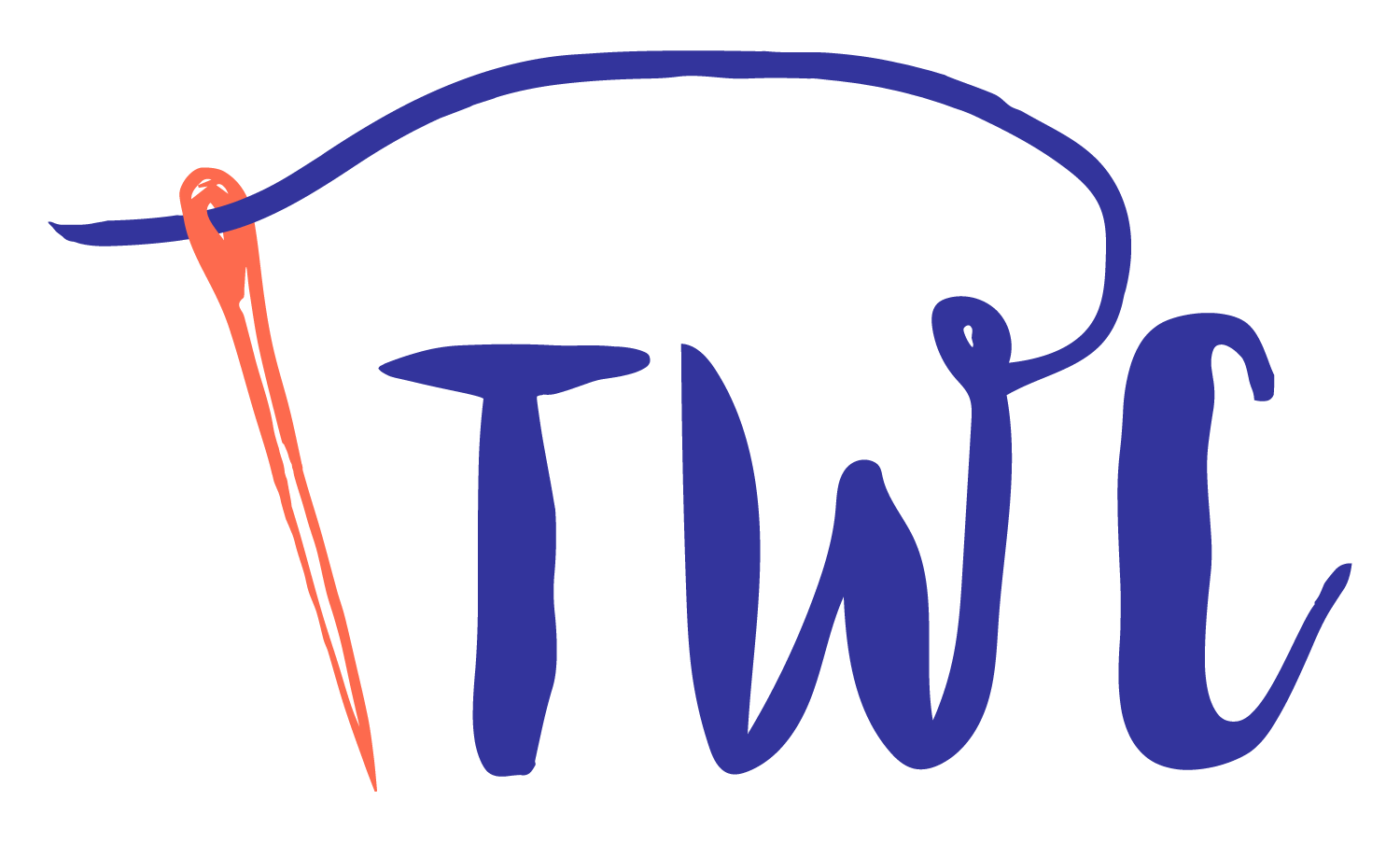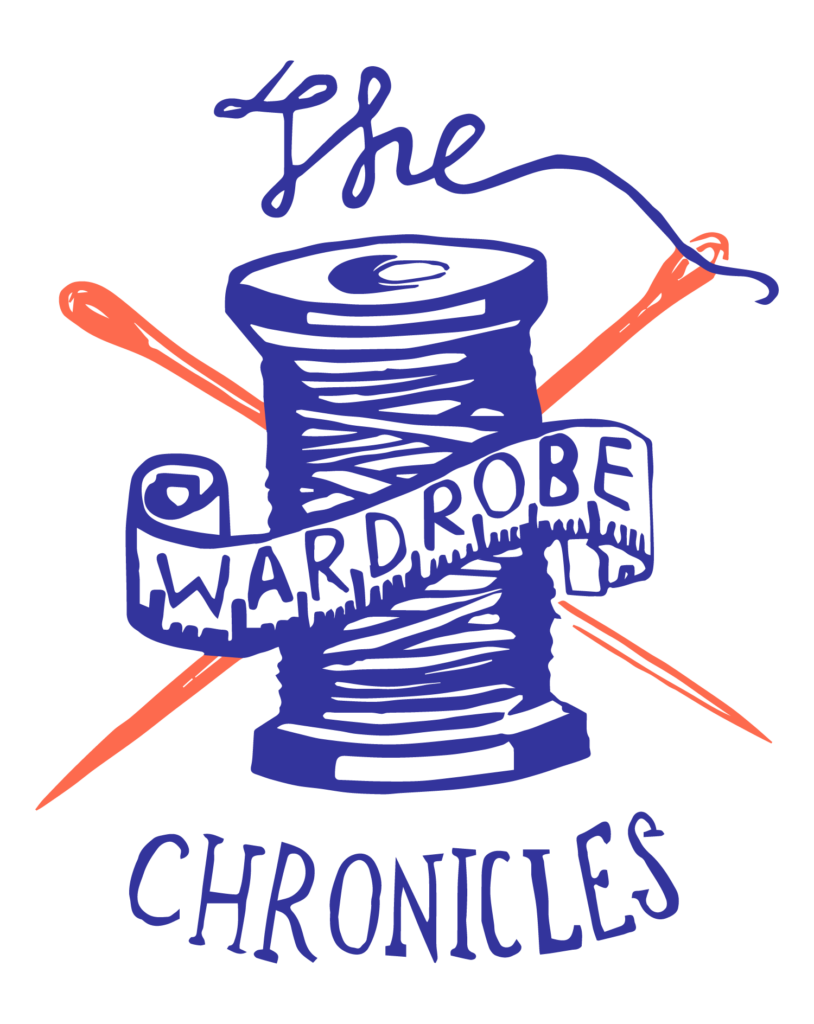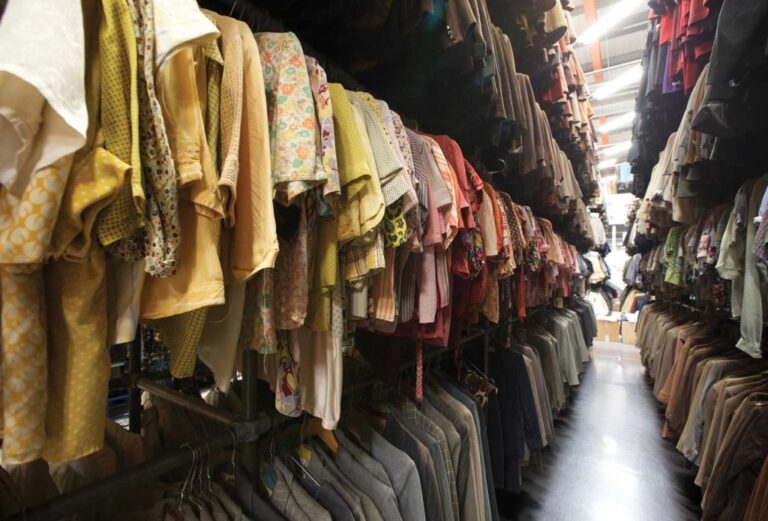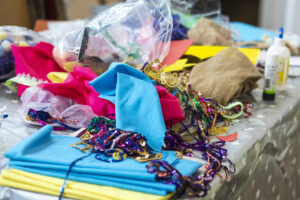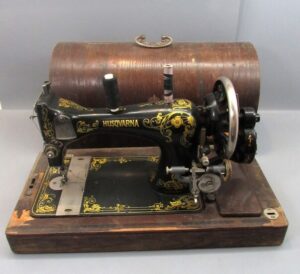AN INTRO INTO THE DIFFERENT ROLES OF COSTUME AND WARDROBE
THEATRE
Members of the wardrobe department have been scuttling around behind the scenes and it’s time to bring them into the spotlight so we thought we’d start with the basics. Who are we and what we do. First off: the start of the story, where a costume’s journey begins: –
CREATIVES
Costume Designer
Works with other creatives to design the costumes for each character. They consider aesthetics, character, budget, practical needs, multi-roleing, location, era, weather, mood. Most are freelancers although there are a few (very few) in-house designers that have a residency at a theatre
Assistant Costume Designer
Varies but generally assists the designer; including attending meetings on their behalf, assisting with fittings, shopping and research. Also works with the buyers and the supervisors
So the designs are down on paper. What happens next?! Well in the fringe it’s usual for the costume designer to then source, make, fit, alter and solve tech problems alone. However in an ideal world these people would be brought on board…
COSTUME REALISATION
Costume Supervisor
Makes the designs a reality: on time and in budget. Liaises between designer and the buyers / costume construction teams to ensure each costume item is sourced. They start by scouring the company’s store, then either hire, buy or commission a costume to be made. They also pass all information onto the running wardrobe team.
Costume Buyer
Purchases costume items or fabric; considering budget, practical needs and the designer’s vision. Also spends a lot of time in customer service queues returning items that didn’t make the cut.
If you want a costume altered or created from scratch you need this freakishly talented team. Often I’ll look at these people casually standing next to their creation and think “seriously how did you make that – it’s so perfectly neat and EXACTLY THE SAME AS THIS PICTURE” and for a split second wonder if they’re from another planet.
COSTUME CONSTRUCTION
Head of Workroom / Workroom Supervisor
Looks after the running of the workshop. Checks that makers are briefed, keeps on top of materials, and liaises with other departments. Is responsible for meeting deadlines.
Costume Workroom Assistants
Reports to the either the Head of Workroom or Head of Alterations. They adapt and transform costumes; either for practical or aesthetic reasons.
Cutter
Working from the designs they create the patterns; either through draping or flat patternmaking. They supervise a team, decide how much fabric needs to be bought, cuts/supervises the cutting of the fabric ready for it to be sewn together
Seamstress
They have insane sewing skills and vast understanding of how clothes sit and move on a person. They usually work freelance being employed by workshops for a certain period of time.
Tailor
A seamstress but specialising in suits and ‘smart’ clothing
Dye Shop Supervisor
Dyes fabric or prints patterns according to the design. Has a keen eye for colour. Also manages the team, orders stock and organises the workload.
Dye Shop Assistants
Similar to the Supervisor minus the admin. Usually creates samples for the designer
Breakdown Artist
The art department of the costume world. Responsible for making costumes look authentic. They have a keen eye for colour and knowledge of how surfaces of fabrics react to different techniques. Most commonly they distress costumes to make them look worn, old or dirty. But also they create specific effects such as blood, vomit, burns or stains.
Costume Props
Problem solvers. Creates items that aren’t clothes but are worn by the cast; such as masks, wings, headwear and any other weird idea the designer has come up with.
Freelance Costume Makers
When there isn’t a workshop, freelance costume makers are employed. And they can do all the above; ie draft, cut and make up the garment themselves.
So we have the costumes. What now? Ah we have to introduce the costumes to the cast. And for that we need this bunch. Some we’ve met before…
COSTUME FITTINGS
Costume Supervisor
By this point the supervisor knows the designs inside out and can suggest ideas to the designer; for example re-using items for different scenes. They also know if there’s time and/or budget for another option to be considered
Fitting Assistant
All round assistant. They write notes and takes photos, fetch items when the designer has a brain wave and sometimes take measurements and pin simple alterations.
Costume Designer
The decision maker
Makers
The costume construction team will have a series of fittings with the cast, the number depends on how complex the costume is, or how often the designer/director changes their mind
Right the rehearsals are done. The tech is over. The show is open. And the costumes are passed over to the in-house team know as ‘Running Wardrobe’. Named because the show is up and running. Not because they have a sporty side. The theatres/ theatre companies usually employ these folks for each show.
RUNNING WARDROBE
Head of Wardrobe / Wardrobe Manager/ Wardrobe Mistress
Manages the day to day running of the wardrobe department ensuring the costumes look the same on the last day as they did on the first. During tech they liaise between the supervisor and the dressers to ensure the designer’s vision is correct. During the run they supervise a team of people, manage budgets, and also support the cast. They have a vast knowledge of maintenance, laundry and quick-change techniques and can react quickly to resolve any issues.
Deputy Head of Wardrobe
Assists the HOD with all the above, and covers them when they’re away. Often dresses the lead actor.
Wardrobe Assistant
Assists the HOD and Deputy. Can sometimes be the head dresser and therefore have an in-depth knowledge of all dressing plots.
Dresser
Ensures all costumes are ready for the performance and assists the cast with their changes. They check costumes daily and report when something has broken. They also provide emotional support for the cast.
Swing Dresser
A swing dresser will learn every dressing plot and be able to cover sickness and holiday
Dep Dresser
They are brought in to cover a plot for a specific number of performances
What happens when the show has finished? Is that the end? Nope!
COSTUME HIRE
Costume Hire Supervisor / Costume Hire Assistants
At the end of a production costumes are sent to the company’s store. They are organised so they are ready to be reused on another show, or hired out. The people that work here have a vast knowledge of costume history and style, as well as maintenance skills, and a good memory of the stock and where it is in the store. They liaise with customers, costume supervisors and designers.
Question: All these jobs look super fun. But is there a way of making big bucks in a theatre’s costume department, whilst also getting a regular pay packet and having your evenings off…?
Answer: Hahahahahahahahahahaaaaaaaa
HOWEVER the answer is surprisingly YES – although very rare. In large, often government funded, producing houses there is usually a team of administrators who are probably doing pretty well for themselves. But the day-to-day responsibilities are far more admin/management based and there’s less contact with actual costumes. I’m not sure if you can tell by the style of this article but I, the writer, have not experienced working in this particular job role so this is slight guesswork from watching these absolute bosses.
ADMIN
Head of Costume + Deputy Head of Costume
Essentially responsible for managing all the people above. Usually concerned with budgets, hiring and also liaising with other departments within the company.
Running Wardrobe Manager
When there is more than one show running this person would oversee all the running wardrobe teams. They’d be involved in discussions regarding the feasibility of a proposed design vision during the pre-production stage.
Costume Administrator
In large organisations there’s non stop admin, these people keep it under control.
FILM
Designer
Is in charge of what each character wears. Will go out shopping with actors or get clothes made. Unlike in theatre this happens throughout the shoot so the designer is employed until the shoot ends.
Design Assistants
Varies, but generally assists the designer with whatever they need; could be research and attending meetings on their behalf.
Supervisor
Is in charge of hiring dailies and making sure the costumes are ready to be worn. They prep for the next shoot day (get the correct costumes out and iron/repair things) Normally they stay on the truck but will come to set when needed. They also often do breaking-down work. They are in charge of knowing what costume is worn when and establishing the look of the crowd.
On Set Standby
Is employed for the full shoot to look after principal actors. This can be specific actors or more generally all the actors on set. They make sure the actor is wearing the correct costume and watch for continuity throughout the shoot. They also keep umbrellas and warm coats on set to look after the actor and their costume.
Dailies
Goes in on a day by day basis to help where needed. Normally looks after the crowd on big shoot days but can also cover illness and holidays. Does what the on set standbys do.
Trainee
Is there to learn. They will normally stay on the truck and help the supervisor with alterations and prepping the line-up but can also go out to set and look after the crowd.
Costume Makers
Film generally has in house makers. The production will hire a head of workroom and then the head of workroom hires the makers.
Breakdown Artists
The art department of the costume world. Responsible for making costumes look authentic. They have a keen eye for colour and knowledge of how surfaces of fabrics react to different techniques. Most commonly they distress costumes to make them look worn, old or dirty. But also they create specific effects such as blood, vomit, burns or stains.
Principle/Crowd Departments
There is a very obvious departmental divide between Principle and Crowd Departments. Principle Team only work with the main actors. Crowd Team only work with background actors. Within these departments are different job roles.
Illustrators
Create the costume drawings for the designer
If you’ve got to the end of this list and said “whaaaat my job isn’t on the list! The bastards forgot me!” – or we’ve made a mistake with one of our descriptions get in contact with us and we’ll sort it.
